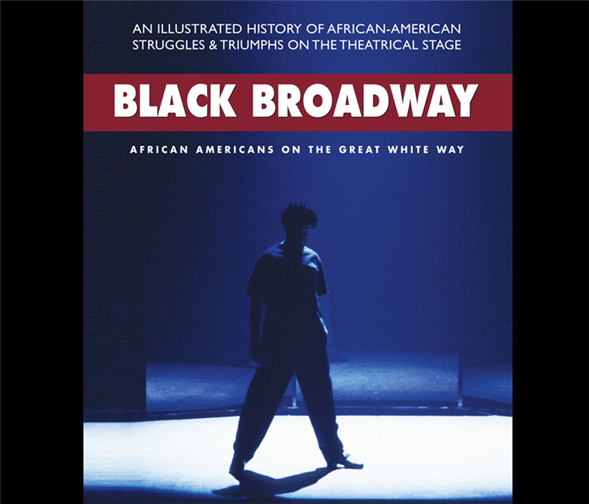Inside Broadway producer Stewart Lane's major new book
---
It's funny how some names stick: The Great White Way, for instance, became the moniker for New York's theatre district because Broadway was the first major thoroughfare to get electric lighting, so that even at night, it was "lit up like daytime," says Stewart F. Lane, a Broadway producer with credits that range from the original
La Cage aux Folles to the currently running
A Gentleman's Guide to Love and Murder.
That "white" designation, though, has often seemed uncomfortably appropriate to describe Broadway's relative lack of diversity. But there's another side to that story, and Lane has helped write it with the lavish new illustrated book
Black Broadway: African Americans on the Great White Way.
He got the inspiration after writing a previous book, 2011's
Jews on Broadway, which "got me interested in minorities, and in what makes America."
In his research for
Black Broadway, he discovered that African-American theatre traditions in the U.S. date back to colonial times. "It's a major history that remains untapped, a wealth of material."
He estimates that the book goes "20 percent" into detailing pre-20th-century black theatre, including stagings of
Uncle Tom's Cabin and the dubious legacy of minstrel shows, with their use of blackface (on both white and black performers) and broad stereotypes.
The rest of the book traces the history of black theatremakers and performers in New York's commercial theatre, with highlights including the first Broadway musical written by and starring African-Americans, 1903's
In Dahomey; Lorraine Hansberry's groundbreaking 1959 drama
A Raisin in the Sun; and Savion Glover and George C. Wolfe's hip-hop/tap show of 1996,
Bring in 'da Noise, Bring in 'da Funk (Glover is on the book's cover). The history comes right up to the present, with last year's Tupac Shakur musical,
Holler If Ya Hear Me (of which Lane was a producer).
If he had to pick one period that was especially momentous and exciting for African-Americans in the arts, Lane says, "The 1920s were a watershed time -- not only for theatre, but for all of America as a cultural center. There was a huge economic boom. And you had shows like
Show Boat, a major musical dealing directly with racism that also took the art form of the musical theatre forward. You had Eugene O'Neill writing
All God's Chillun Got Wings and
Emperor Jones. You had the Harlem Renaissance."
{Image1}
While the Black Arts movement of the 1960s and 70s produced its own share of theatrical and cultural ferment, icons like Amiri Baraka and the Negro Ensemble Company were part of the broader Off-Broadway revolution, which largely didn't bring its shows uptown. That changed in the 1980s, when one of the poets nurtured by the Black Arts scene, August Wilson, started writing plays and created a body of work that achieved mainstream success as well as critical acclaim.
Broadway is still no paragon of diversity, although looking ahead to next season gives some hope: George C. Wolfe and Savion Glover are back with
Shuffle Along, and a revival of
The Color Purple is on its way. There's also the Japanese-American internment-themed musical
Allegiance and the multicultural cast of the hip-hop
Hamilton. "The more we open to other people in the art form, the more material we have to work with," says Lane of these trends.
Still, while he's hopeful overall about the state of theatre, he muses philosophically about the current moment: "Theatre is like fine wine: Some seasons are better than others. You can't manufacture success, and you can't second-guess. You just do best job you can."
--
Rob Weinert-Kendt is a senior editor at American Theatre and writes regularly about theatre for the New York Times
